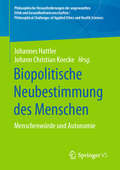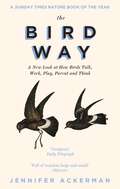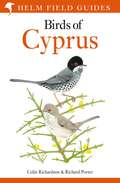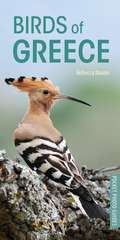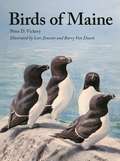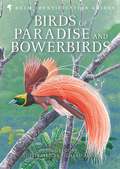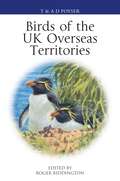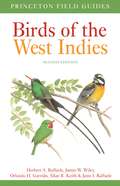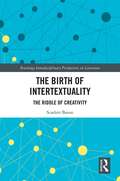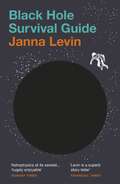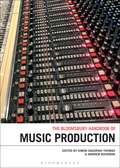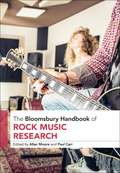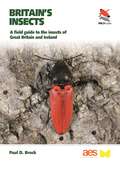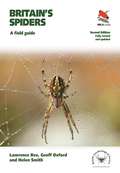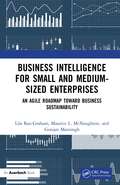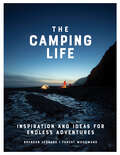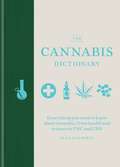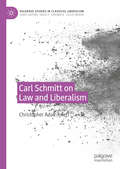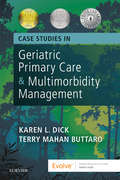- Table View
- List View
Biopolitische Neubestimmung des Menschen: Menschenwürde und Autonomie (Philosophische Herausforderungen der angewandten Ethik und Gesundheitswissenschaften/ Philosophical Challenges of Applied Ethics and Health Sciences)
Die Allgemeine Erklärung der Menschenrechte und das Grundgesetz der Bundesrepublik Deutschland haben die Menschenwürde als Höchstwert und oberstes Prinzip verankert. Biopolitischen Eingriffen durch den Staat sollte damit eine absolute Grenze gesetzt werden. Die Unbestimmtheit der Menschenwürde hat jedoch in den bioethischen Debatten der letzten Jahrzehnte dazu geführt, dass die Vorrangstellung der Menschenwürde in Frage gestellt wurde oder sich Vertreter entgegengesetzter Positionen beide gleichermaßen auf die Würde des Menschen berufen konnten. So stehen Eugenik und Euthanasie – in liberalem Gewande – als legitime Optionen wieder auf der Tagesordnung. Dies ist einerseits eine Problemanzeige und andererseits der Hinweis darauf, das unterschiedliche Lager unter Würde unterschiedliches verstehen. Der vorliegende Band diskutiert vorranging das Verhältnis von Menschenwürde und Autonomie als den zentralen Argumentationsgrundlagen dieser Debatte. Dabei wird der Frage nachgegangen, inwieweit es gerechtfertigt ist, den Würdebegriff durch den Autonomiebegriff zu ersetzen, bzw. ob der Würdebegriff Aspekte des Autonomiebegriffs integrieren oder ausschließen muss, um dem Grundanliegen der Allgemeinen Erklärung der Menschenrechte und des Grundgesetzes der Bundesrepublik Deutschland gerecht zu werden, ohne Abstriche am Grundsatz der Unverfügbarkeit zu riskieren.
The Bird Way: A New Look at How Birds Talk, Work, Play, Parent, and Think
by Jennifer AckermanFrom the New York Times bestselling author of The Genius of Birds, a radical investigation into the bird way of being, and the recent scientific research that is dramatically shifting our understanding of birds. 'There is the mammal way and there is the bird way.' This is one scientist's pithy distinction between mammal brains and bird brains: two ways to make a highly intelligent mind. But lately, scientists have taken a new look at bird behaviours they've previously dismissed as anomalies. What they're finding is upending the traditional view of how birds live, how they communicate, forage, court, survive. They're also revealing the remarkable intelligence underlying these activities, abilities we once considered uniquely our own - deception, manipulation, kidnapping, infanticide, but also, ingenious communication between species, collaboration, altruism and play. Some of these behaviours are biological conundrums that seem to push the edges of - well - birdness: A mother bird that kills her own infant sons, and another that selflessly tends to the young of other birds. Young birds that devote themselves to feeding their siblings and others so competitive they'll stab their nestmates to death. Birds that give gifts and birds that steal, birds that dance or drum, that paint their creations or paint themselves, and birds that summon playmates with a special call - and may hold the secret to our own penchant for playfulness and the evolution of laughter. Drawing on personal observations, the latest science, and her bird-related travel around the world, Ackerman shows there is clearly no single bird way of being. In every respect, in plumage, form, song, flight, lifestyle, niche, and behaviour, birds vary. It's what we love about them.
Birds of Cyprus
by Colin Richardson Richard PorterCyprus is a great place for birding, and one of the most popular places for birders to visit in Europe. It holds populations of a number of regional scarcities that are very hard to see elsewhere, plus a number of endemic subspecies, and the two jewels in the crown – two full endemics, Cyprus Wheatear and Cyprus Warbler, the latter of which graces the jacket of this new Helm field guide to the island. Detailed plates are allied to concise identification text, with accurate maps stemming from Colin Richardson's decades-long programme of population-mapping on the island. Together, these elements make this the definitive guide to Cyprus's birds, one that no visitor to this beautiful island can be without.
Birds of Greece (Pocket Photo Guides)
by Rebecca NasonFrom the Hoopoe to the Black-Headed Bunting, Greece is home to a wide range of avifauna, thanks to the richly varied habitats it has to offer. Pocket-sized and portable, this compact guide provides superb full colour photographs and detailed descriptions of each bird likely to be seen on a visit to the country. Whether you're a seasoned birdwatcher or a tourist keen to identify the birds you spot on your holiday, Birds of Greece is sure to be helpful.
Birds of Maine
by Peter Vickery Charles Duncan Jeffrey V. Wells William J. SheehanA comprehensive and beautifully illustrated overview to the birds of Maine The first comprehensive overview of Maine’s incredibly rich birdlife in more than seven decades, Birds of Maine is a detailed account of all 464 species recorded in the Pine Tree State. It is also a thoroughly researched, accessible portrait of a region undergoing rapid changes, with southern birds pushing north, northern birds expanding south, and once-absent natives like Atlantic Puffins brought back by innovative conservation techniques pioneered in Maine.Written by the late Peter Vickery in cooperation with a team of leading ornithologists, this guide offers a detailed look at the state’s dynamic avifauna—from the Wild Turkey to the Arctic Tern—with information on migration patterns and timing, current status and changes in bird abundance and distribution, and how Maine's geography and shifting climate mold its birdlife. It delves into the conservation status for Maine's birds, as well as the state's unusually textured ornithological history, involving such famous names as John James Audubon and Theodore Roosevelt, and home-grown experts like Cordelia Stanwood and Ralph Palmer. Sidebars explore diverse topics, including the Old Sow whirlpool that draws multitudes of seabirds and the famed Monhegan Island, a mecca for migrant birds.Gorgeously illustrated with watercolors by Lars Jonsson and scores of line drawings by Barry Van Dusen, Birds of Maine is a remarkable guide that birders will rely on for decades to come.
Birds of Maine
by Peter Vickery Charles Duncan Jeffrey V. Wells William J. SheehanA comprehensive and beautifully illustrated overview to the birds of Maine The first comprehensive overview of Maine’s incredibly rich birdlife in more than seven decades, Birds of Maine is a detailed account of all 464 species recorded in the Pine Tree State. It is also a thoroughly researched, accessible portrait of a region undergoing rapid changes, with southern birds pushing north, northern birds expanding south, and once-absent natives like Atlantic Puffins brought back by innovative conservation techniques pioneered in Maine.Written by the late Peter Vickery in cooperation with a team of leading ornithologists, this guide offers a detailed look at the state’s dynamic avifauna—from the Wild Turkey to the Arctic Tern—with information on migration patterns and timing, current status and changes in bird abundance and distribution, and how Maine's geography and shifting climate mold its birdlife. It delves into the conservation status for Maine's birds, as well as the state's unusually textured ornithological history, involving such famous names as John James Audubon and Theodore Roosevelt, and home-grown experts like Cordelia Stanwood and Ralph Palmer. Sidebars explore diverse topics, including the Old Sow whirlpool that draws multitudes of seabirds and the famed Monhegan Island, a mecca for migrant birds.Gorgeously illustrated with watercolors by Lars Jonsson and scores of line drawings by Barry Van Dusen, Birds of Maine is a remarkable guide that birders will rely on for decades to come.
Birds of Paradise and Bowerbirds
by Phil GregoryRenowned for their elaborate and dazzling plumages, the birds of paradise (Paradisaeidae) and bowerbirds (Ptilonohynchidae) exhibit some of the most astonishing behaviours in the avian kingdom. The former is the most iconic group of birds found in New Guinea, while the bowerbirds extend into Australia, and are perhaps best known for the males' construction of avenue bowers, used to tempt females on the forest floor. This comprehensive monograph is dedicated to these two families, combining the product of more than two decades of research and scholarship with original observations by the author and many other knowledgeable contributors. Birds of Paradise and Bowerbirds is the ultimate reference to these two groups. It provides a thorough guide to their identification, taxonomy and ecology, with detailed distribution maps accompanying the text. A series of beautifully illustrated plates by Richard Allen cover all of the 108 recognised taxa in these groups, with these supplemented by more than 200 photographs covering a range of racial and age-related plumage variety. This book is an indispensable addition to the libraries of all birders and ornithologists interested in these sensational birds.
Birds of the UK Overseas Territories
by Roger RiddingtonThe UK Overseas Territories (UKOTs) are scattered across the globe. Most are small islands or island complexes, occurring from the Caribbean to the furthest reaches of the South Atlantic, via the Indian and Pacific Oceans. In terms of global biodiversity, these territories are remarkably significant. Among landscapes that range from coral atolls, through mangroves and dry forests to the ice sheets of Antarctica, the UKOTs support no fewer than 45 species of birds currently considered to be globally threatened. They are also home to a third of all the world's breeding albatrosses, and nine of the world's 17 species of penguin. In a rapidly changing world, the UKOTs symbolise global crises in climate and biodiversity. Threats faced by their wildlife range from mortality of seabirds at sea through industrial fisheries, and on land as a result of introduced ground predators, to the utter devastation of hurricanes in the Caribbean, which provide a stark reminder of our changing climate. The human impact on the wildlife of our planet has been increasing for centuries, but the next few decades promise to be critical. This book explores the birds and other wildlife of each of the 14 UKOTs, with a particular focus on environmental threats and conservation priorities. Written by authors with a deep connection to the sites, this book represents an important stocktake of the biological richness of these special places in the early 21st century.
Birds of the West Indies Second Edition (Princeton Field Guides #143)
by Birds of the Wes Herbert A. Raffaele James Wiley Orlando H. Garrido Allan Keith Janis I. RaffaeleAn updated edition of the acclaimed field guide to the spectacular birds of the West IndiesBirds of the West Indies is the first field guide that covers and depicts all birds known to occur in the region, including infrequently occurring and introduced forms. Now fully updated and expanded, this stunningly illustrated book features detailed accounts of more than 600 species, describing identification field marks, range, status, voice, and habitat. There are more than 100 beautiful color plates that depict plumages of all species—including those believed to have recently become extinct—as well as distribution maps, a color code for endemic birds, and an incisive introduction that discusses avifaunal changes in the West Indies in the past fifteen years and the importance of conservation.Covers more than 60 new species, including vagrants, introductions, and taxonomic splitsUpdates the status of every speciesFeatures illustrations for all new species and improved artwork for warblers and flycatchersColor codes endemic species confined to one or just a few islandsIncludes many new and enhanced mapsProvides bird weights for each speciesCompact and easy to use in the field
The Birth of Intertextuality: The Riddle of Creativity (Routledge Interdisciplinary Perspectives on Literature)
by Scarlett BaronWhy was the term ‘intertextuality’ coined? Why did its first theorists feel the need to replace or complement those terms – of quotation, allusion, echo, reference, influence, imitation, parody, pastiche, among others – which had previously seemed adequate and sufficient to the description of literary relations? Why, especially in view of the fact that it is still met with resistance, did the new concept achieve such popularity so fast? Why has it retained its currency in spite of its inherent paradoxes? Since 1966, when Kristeva defined every text as a ‘mosaic of quotations’, ‘intertextuality’ has become an all-pervasive catchword in literature and other humanities departments; yet the notion, as commonly used, remains nebulous to the point of meaninglessness. This book seeks to shed light on this thought-provoking but treacherously polyvalent concept by tracing the theory’s core ideas and emblematic images to paradigm shifts in the fields of science, philosophy, psychoanalysis, and linguistics, focusing on the shaping roles of Darwin, Nietzsche, Freud, Saussure, and Bakhtin. In so doing, it elucidates the meaning of one of the most frequently used terms in contemporary criticism, thereby providing a much-needed foundation for clearer discussions of literary relations across the discipline and beyond.
Black Hole Survival Guide
by Janna LevinWhat would happen if you fell into a black hole?Black holes are the most extraordinary phenomenon in the universe, but they are a riddle that confounds our intuitions. Anything that enters them can never escape, and yet they contain nothing at all. They are bigger on the inside than the outside suggests. They are dark on the outside but not on the inside. They invert time into space and space into time. Black holes are found throughout the universe. They can be microscopic. They can be billions of times larger than our sun. Our solar system is currently orbiting a black hole 26,000 light years away at a speed of 200 km per second.In Black Hole Survival Guide physicist and novelist Janna Levin takes you on a journey into a black hole, explaining what would happen to you in there and why. In the process you'll come to see how their mysteries contain answers to some of the most profound questions ever asked about the nature of our universe.
The Bloomsbury Handbook of Music Production (Bloomsbury Handbooks)
by Simon Zagorski-Thomas Andrew BourbonThe Bloomsbury Handbook of Music Production provides a detailed overview of current research on the production of mono and stereo recorded music. The handbook consists of 33 chapters, each written by leaders in the field of music production. Examining the technologies and places of music production as well the broad range of practices – organization, recording, desktop production, post-production and distribution – this edited collection looks at production as it has developed around the world. In addition, rather than isolating issues such as gender, race and sexuality in separate chapters, these points are threaded throughout the entire text.
The Bloomsbury Handbook of Popular Music and Social Class (Bloomsbury Handbooks)
by Ian PeddieThe Bloomsbury Handbook of Popular Music and Social Class is the first extensive analysis of the most important themes and concepts in this field. Encompassing contemporary research in ethnomusicology, sociology, cultural studies, history, and race studies, the volume explores the intersections between music and class, and how the meanings of class are asserted and denied, confused and clarified, through music. With chapters on key genres, traditions, and subcultures, as well as fresh and engaging directions for future scholarship, the volume considers how music has thought about and articulated social class. It consists entirely of original contributions written by internationally renowned scholars, and provides an essential reference point for scholars interested in the relationship between popular music and social class.
The Bloomsbury Handbook of Rock Music Research (Bloomsbury Handbooks)
by Allan Moore Paul CarrThe Bloomsbury Handbook of Rock Music Research is the first comprehensive academic survey of the field of rock music as it stands today. More than 50 years into its life and we still ask - what is rock music, why is it studied, and how does it work, both as music and as cultural activity? This volume draws together 37 of the leading academics working on rock to provide answers to these questions and many more. The text is divided into four major sections: practice of rock (analysis, performance, and recording); theories; business of rock; and social and culture issues. Each chapter combines two approaches, providing a summary of current knowledge of the area concerned as well as the consequences of that research and suggesting profitable subsequent directions to take. This text investigates and presents the field at a level of depth worthy of something which has had such a pervasive influence on the lives of millions.
A Blues Bibliography: Second Edition: Volume 2
by Robert FordThis book provides a sequel to Robert Ford's comprehensive reference work A Blues Bibliography, the second edition of which was published in 2007. Bringing Ford's bibliography of resources up to date, this volume covers works published since 2005, complementing the first volume by extending coverage through twelve years of new publications. As in the previous volume, this work includes entries on the history and background of the blues, instruments, record labels, reference sources, regional variations, and lyric transcriptions and musical analysis. With extensive listings of print and online articles in scholarly and trade journals, books, and recordings, this bibliography offers the most thorough resource for all researchers studying the blues.
A Blues Bibliography: Second Edition: Volume 2
by Robert FordThis book provides a sequel to Robert Ford's comprehensive reference work A Blues Bibliography, the second edition of which was published in 2007. Bringing Ford's bibliography of resources up to date, this volume covers works published since 2005, complementing the first volume by extending coverage through twelve years of new publications. As in the previous volume, this work includes entries on the history and background of the blues, instruments, record labels, reference sources, regional variations, and lyric transcriptions and musical analysis. With extensive listings of print and online articles in scholarly and trade journals, books, and recordings, this bibliography offers the most thorough resource for all researchers studying the blues.
A Brief Atlas of the Lighthouses at the End of the World
by González MacíasThere is something beautiful and wild in the impossible architecture of lighthouses. They have been the homes and workplaces of men and women whose romantic guardianship has saved countless lives from cruel seas. Yet while that way of life fades away, as the lights go out and the buildings crumble, we still have their stories.From a blind lighthouse keeper tending a light in the Arctic Circle, to an intrepid young girl saving ships from wreck at the foot of her father's lighthouse, and the plight of the lighthouse crew cut off from society for forty days, this is a glorious book full of illuminating stories that will transport the reader to the world's most isolated and inspiring lighthouses.With over thirty tales that explore the depths to which we can sink and the heights to which we can soar as human beings, and accompanied by beautiful illustrations, nautical charts, maps, architectural plans and curious facts, A Brief Atlas of the Lighthouses at the End of the World is as full of wonder as the far flung lighthouses themselves.Translated from Spanish by Daniel Hahn
Britain's Insects: A Field Guide to the Insects of Great Britain and Ireland (WILDGuides #78)
by Dr. Paul D. BrockThe go-to photographic guide to Britain and Ireland’s insectsBritain’s Insects is an innovative, up-to-date, carefully designed and beautifully illustrated field guide to Britain and Ireland's twenty-five insect orders, concentrating on popular groups and species that can be identified in the field. Featuring superb photographs of live insects, the guide covers the key aspects of identification and provides information on status, distribution, seasonality, habitat, food plants and behaviour. It also offers insight into the life history of the various insect groups, many of which are truly amazing. This is the go-to guide for entomologists, naturalists, gardeners, wildlife photographers and anyone else interested in insects, whatever their level of knowledge.More than 2,600 stunning photographs, carefully selected to show key identification featuresPhoto guides to every insect order, covering 316 families and almost 850 generaCovers 1,653 species, of which 1,476 are illustratedDesigned to allow easy, accurate comparison of similar speciesUp-to-date distribution maps and charts summarizing adult seasonalityQR codes that link to sound recordings of grasshoppers and cricketsInformation on photographing and recording insects to help conservation
Britain's Spiders: A Field Guide – Fully Revised and Updated Second Edition (WILDGuides #77)
by Britain's Spider Lawrence Bee Britain's Spider Geoff Oxford Britain's Spider Helen SmithA comprehensively updated edition of an identification guide that was named a Guardian Best Nature Book of the YearNow in a comprehensively revised and updated new edition, Britain’s Spiders is a guide to all 38 of the British families, focussing on spiders that can be identified in the field. Illustrated with a remarkable collection of photographs, it is designed to be accessible to a wide audience, including those new to spider identification. This book pushes the boundaries of field identification for this challenging group, combining information on features that can be seen with the naked eye or a hand lens with additional evidence from webs, egg sacs, behaviour, phenology, habitats and distributions. Individual accounts cover 404 species—all of Britain’s “macro” spiders and the larger money spiders, with the limitations to field identification clearly explained. This new edition includes nine species new to Britain, many recent name changes, updated distribution maps and species information, new guides to help identify spider families and distinctive species, and the latest species checklist.A guide to spider families, based on features recognizable in the field, focussing on body shape and other characteristics, as well as separate guides to webs and egg-sacsDetailed accounts and more than 700 stunning photographs highlight key identification features for each genus and species, and include information on status, behaviour and habitatsUp-to-date distribution maps, and charts showing adult seasonalityIntroductory chapters on the biology of spiders, and where, when and how to find them, including equipment needed in the fieldA complete list of the spiders recorded in Britain, indicating the ease of identification as well as rarity and conservation statusInformation on how to record spiders and make your records count, and guidance on how to take your interest furtherNew to this edition: coverage of nine species new to Britain, updated species information and distribution maps, identification guides to spider families and distinctive species, and the latest species checklist
Business Intelligence for Small and Medium-Sized Enterprises: An Agile Roadmap toward Business Sustainability
by Lila Rao-Graham Maurice L. McNaughton Gunjan MansinghBusiness intelligence (BI) has evolved over several years as organizations have extended their online transaction processing (OLTP) capabilities and applications to support their routine operations. With online analytical processing (OLAP), organizations have also established the capability to extract internal and external data from a variety of sources to specifically obtain intelligence about non-routine and often less-structured arrangements. BI therefore refers to applications and technologies that are used to gather, provide access to, and analyze data and information about the operations of an organization. It has the capability of providing comprehensive insight into the more volatile factors affecting the business and its operations, thereby facilitating enhanced decision-making quality and contributing to the creation of business value. Larger and more sophisticated organizations have long been exploiting these capabilities. Business Intelligence for Small and Medium-Sized Enterprises (SMEs) guides SMEs in replicating this experience to provide an agile roadmap toward business sustainability. The book points out that successful BI implementations have generated significant increases in revenue and cost savings, however, the failure rates are also very high. More importantly, it emphasizes that a full range of BI capabilities is not the exclusive purview of large organizations. It shows how SMEs make extensive use of BI techniques to develop the kind of agility endowing them with the organizational capability to sense and respond to opportunities and threats in an increasingly dynamic business environment. It points to the way to a market environment in which smaller organizations could have a larger role. In particular, the book explains that by establishing the agility to leverage internal and external data and information assets, SMEs can enhance their competitiveness by having a comprehensive understanding of the key to an agile roadmap for business sustainability.
Business Intelligence for Small and Medium-Sized Enterprises: An Agile Roadmap toward Business Sustainability
by Lila Rao-Graham Maurice L. McNaughton Gunjan MansinghBusiness intelligence (BI) has evolved over several years as organizations have extended their online transaction processing (OLTP) capabilities and applications to support their routine operations. With online analytical processing (OLAP), organizations have also established the capability to extract internal and external data from a variety of sources to specifically obtain intelligence about non-routine and often less-structured arrangements. BI therefore refers to applications and technologies that are used to gather, provide access to, and analyze data and information about the operations of an organization. It has the capability of providing comprehensive insight into the more volatile factors affecting the business and its operations, thereby facilitating enhanced decision-making quality and contributing to the creation of business value. Larger and more sophisticated organizations have long been exploiting these capabilities. Business Intelligence for Small and Medium-Sized Enterprises (SMEs) guides SMEs in replicating this experience to provide an agile roadmap toward business sustainability. The book points out that successful BI implementations have generated significant increases in revenue and cost savings, however, the failure rates are also very high. More importantly, it emphasizes that a full range of BI capabilities is not the exclusive purview of large organizations. It shows how SMEs make extensive use of BI techniques to develop the kind of agility endowing them with the organizational capability to sense and respond to opportunities and threats in an increasingly dynamic business environment. It points to the way to a market environment in which smaller organizations could have a larger role. In particular, the book explains that by establishing the agility to leverage internal and external data and information assets, SMEs can enhance their competitiveness by having a comprehensive understanding of the key to an agile roadmap for business sustainability.
The Camping Life: Inspiration and Ideas for Endless Adventures
by Brendan Leonard Forest WoodwardAn inspirational and captivating camping book with detailed information for how to camp like an expert with both comfort and style.
The Cannabis Dictionary: Everything you need to know about cannabis, from health and science to THC and CBD
by Alex HalperinA cannabis revolution is taking place. As people embrace it like never before, The Cannabis Dictionary looks at every aspect of this special plant. Hundreds of entries cover the key information from the cannabis world, from health effects, CBD oil and varieties of the plant, to legalization, big business and psychological impact.Renowned cannabis journalist Alex Halperin is your guide through the many facts and falsehood surrounding the subject, giving an intelligent, in-depth but accessible overview of a fascinating, ever-changing topic.
Carl Schmitt on Law and Liberalism (Palgrave Studies in Classical Liberalism)
by Christopher Adair-ToteffThis book is an investigation into Carl Schmitt’s critical thinking regarding the alleged deficiencies he identified in modern liberalism. Noted jurist, constitutional scholar, and a fierce critic of liberalism and pluralism, Schmitt mounted a sustained attack on the defects of the Weimar constitution between 1916 and 1934, contending that what Germany needed was a strong decisive leader to maintain political unity. This book provides a concise and clear explanation of Schmitt’s disagreements with other constitutional scholars, from his time as a university graduate up until Hitler’s rise to power. Although these disagreements were couched in legal terminology, they represented political criticisms that went directly to the heart of modern democracy, culminating in Schmitt's defence of the Reich against Prussia in the constitutional crisis of 1932. The book concludes with a strenuous defence of modern liberalism in response to the Schmittian critique. Thus, this book is not just an exploration of Carl Schmitt’s work, but a response to one of the harshest attacks on the modern liberal state, and a blueprint for a renewal of democracy, pluralism, and the rule of law.
Case Studies in Geriatric Primary Care & Multimorbidity Management - E-Book
by Terry Mahan Buttaro Karen DickGain expertise in primary care of older adults with a case-based approach to geriatric primary care and multimorbidity management. Written by two leading academic and clinical experts in geriatric primary care, Case Studies in Geriatric Primary Care and Multimorbidity Management, 1st Edition uses detailed Exemplar Case Studies and Practice Case Studies to teach you how to think like an expert geriatric clinician. Because most older adults have more than one condition when seeking care, both Exemplar and Practice Case Studies place a strong emphasis on "multimorbidity" management, (the management of patients with a host of complex, interacting conditions). To provide extensive practice in learning how to think like an expert, case studies reflect the reality that care does not necessarily begin or end in the primary care setting. Cases therefore move fluidly from primary care to acute care to inpatient rehabilitation to assisted living to long-term care. Building on foundational introductory chapters, cases also call on you to develop interprofessional collaboration skills and reflect the diversity of today's older adults, in terms of age (young-old to old-old), gender, culture, ethnicity, sexuality, socioeconomic status, and more! As you work through both basic-level and advanced Practice Case Studies, you can make extensive notes in the printed book and then go online to submit answers for grading and receive expert feedback for self-reflection.NEW! Introductory unit on the core principles of caring for older adults gives you a strong foundation in the principles of geriatric primary care and multimorbidity management.NEW! and UNIQUE! Exceptionally detailed, unfolding Exemplar Case Studies demonstrate how an expert advanced practitioner "thinks clinically" to provide care to older adults with multiple conditions. NEW and UNIQUE! Exceptionally detailed, unfolding Practice Case Studies emphasize patient diversity and multimorbidity management across healthcare settings to help you develop advanced clinical reasoning skills for geriatric primary care. NEW and UNIQUE! Strong emphasis on multimorbidity management focuses on caring for older adults with multiple chronic conditions. NEW! Emphasis on the continuum of care across settings reflects the reality that care does not necessarily begin or end in the primary care setting but can move from primary care to acute care to inpatient rehabilitation to assisted living to long-term care, and so forth.NEW! Online answer submission for grading and expert feedback for self-reflection.NEW! Emphasis on patient diversity reflects the makeup of today's older adult, population in terms of age (young-old to old-old), gender, culture, ethnicity, sexuality, socioeconomic status, and more.NEW! Emphasis on interprofessional collaboration use Exemplar Case Studies and Practice Case Studies to allow you to demonstrate your interprofessional collaboration skills.
